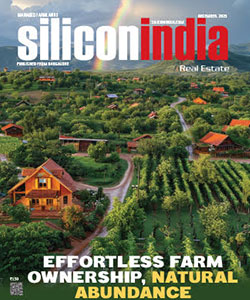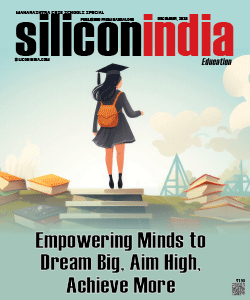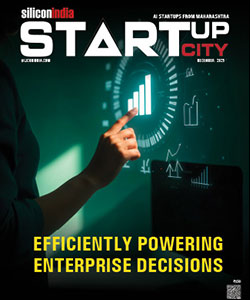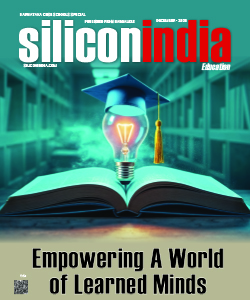Emerging Tech Trends in the Inverter Battery Space

Preeti boasts of an 18 years long career during which she has successfully handled key roles across an array of companies such as Vision Software, Brookfield Global Integrated Solutions, Metcash Trading, Schneider Electric, Clipsal Solar and The Adecco Group, prior to joining Luminous in 2022. Additionally, she was also the Non-Executive Board Member at Guide Dogs Australia and Management Committee Member at Australia India Business Council.
In a recent conversation with Siliconindia, Preeti Bajaj, MD & CEO, Luminous Power Technologies shared her insights on various aspects pertaining to the current invertor battery space. Below are the excerpts from the exclusive interview
How is the inverter battery sector driving innovation to address the diverse challenges of energy storage?
Innovation will be pushing the frontiers in India's battery energy storage systems as the market continues to grow. The development of high-performance battery technologies such as lithium-ion has significantly improved the energy storage capabilities of inverters. These batteries offer higher energy density, longer cycle life and faster charging, making them ideal for energy storage applications. Hybrid inverters are also a big novelty, as it combines the functions of a traditional solar inverter and a battery inverter into a single device. Such innovations have made it easier for homeowners and small businesses to adopt energy storage solutions. Since energy storage technologies are evolving at a rapid pace, there are focused R&D efforts that are being put into place to enhance the efficiency, durability, and cost-effectiveness of inverter battery systems. This includes exploring new alternate chemistries, manufacturing processes, and control algorithms.
How are inverter battery manufacturers creating energy storage solutions that can store excess energy generated during non-peak hours for later use?
To address the climate change crisis where we have to limit the temperature rise of earth to below 1.5oC, the integration of renewable energy sources in the power generation process all over the world is highly critical. Since renewable energy sources available are invaluable but not consistent, energy storage solutions cater to the continuous need of power. Manufacturers are focusing on developing advanced battery chemistries such as lithium-ion which offer higher energy density, longer cycle life and improved charge/discharge efficiency. These batteries can store more energy and provide enhanced performance over time. Additionally, hybrid inverter systems combine the functions of a solar inverter and battery inverter to optimize energy production, storage and distribution, making them ideal for areas with intermittent or unreliable power sources.
What is the impact of digitalization and smart technologies on inverter batteries?
Our digitization journey is at a very exciting juncture now, wherein we deal with a lot of data science and data analysis in our day-to-day activities with our in-house data analytics team. We are building solutions to capture energy storage data, inverter data, and usage data of the customer through digitization systems that are integrated within our products. In our manufacturing units, intensive industry 4.0 is being used, especially in the supply chain. Our inverter manufacturing plants are smart factories that are armed with lots of digital, connected technologies, robotics and other tools. The digitalization journey is not only in the product, but also in how you are manufacturing the product as well as leveraging digitalization at the customers’ end. We are also evaluating Conversational AI and Deep Learning models for our customer support and to understand the customers’ behaviours & requirements.
How is customer feedback and evolving energy needs driving innovation in the design and functions of inverter batteries?
Customer feedback drives innovation and evolution in any product domain, and the same is true for energy storage solutions. Being in a segment where people need continuous power, we are highly receptive of what our customers are communicating to us. Since the energy needs in different parts of the world are completely different from each other, our R&D team is studying different energy needs in different economies and different types of customers throughout the world. Customer knowledge gives us the visibility to design the product and update the product as per the changing situation of power requirement.
Read More News :
Digital Transformation - Key Aspects Every Business Owner Must Be Aware Of
Why is SaaS Model Gaining Widespread Adoption in India Lately?



.jpg)

